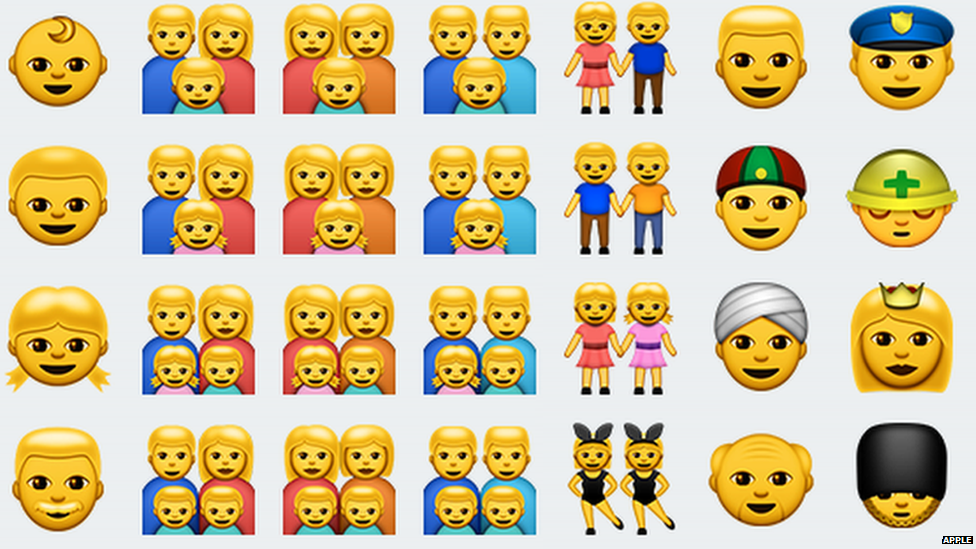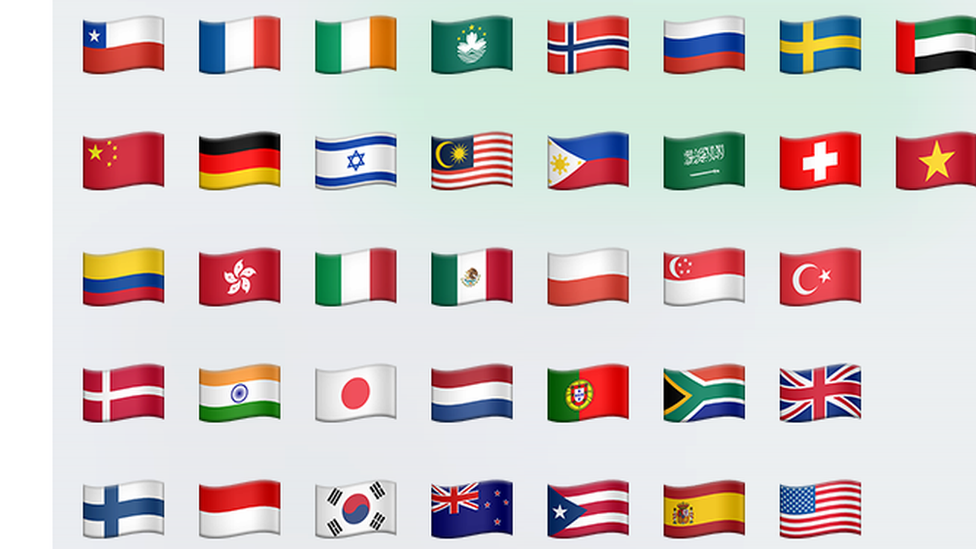The missing emojis we'd like to see
- Published

Not included in the new emojis: Yorkshire puddings, glass of fizz, sausages, taco and crisps!
So, on closer inspection the new "diverse" emojis seem to be missing a few symbols that we think are crucial to our busy social media lives.
Errr, where are the crisps? And the Prosecco or whatever region of fizz you can afford?
Plus in the same sex couples section, why is everyone blonde?
Where are the brunettes? Or non-white gay couples? They appear to be under-represented in this "diverse" world of technology.

The new set of emojis was made available on Wednesday via an iOS 8.3 update to Apple phones (You have to go to settings and it can only done using Wi-Fi, not 3G or 4G).
But on Wednesday night social media was busy with posts about the cartoon symbols missing from the new list.
Especially, food.
There was a whole thread on social media, external of people complaining that there are no tacos. Really.
If the Mexican corn-based food is not a big part of your life, then crisps probably are.
Britain loves potato chips and the country is the largest manufacturer in the world, external.

The cartoon emotion list is also missing a glass of fizz to indicate those joyous occasions of celebrating good news.
A cocktail glass with a stirrer in or a glass of red wine just doesn't cut it in the same way.
The diversity within the new same-sex couple list is also under representing brunettes and non-white people.
All the same-sex couples are blond and some would argue that the stereotypical colours for boys and girls are not what they once were.
Yet, the gay couples are shown wearing blue if they are male and pink if they are female.

There has also been criticism of the different ethnicity groups that have been added.
Up until Wednesday there was no option for a black person, yet there was an Indian man with a turban.
There has also been some criticism about the bright yellow skin tone in the new emojis.
But before Apple even started using the digital images, even the earliest emojis in the 90s in Japanese messaging programs used yellow faces.
The new emoji characters with six skin tones are apparently based on the Fitzpatrick Classification scale, which was founded by dermatologist Thomas Fitzpatrick in 1975.
The skin tones are measured on how well each one reacts to UV rays, said the Unicode Consortium in their emoji diversity plan, external.
There have been 300 new emojis added, with an extended flag section but there are sure to be quite a few nations or countries that have been unrepresented, given there are more than 200 national flags.
If you can spot any that have been missed, please tweet us @BBCNewsbeat.
Follow @BBCNewsbeat, external on Twitter, BBCNewsbeat, external on Instagram and Radio1Newsbeat, external on YouTube